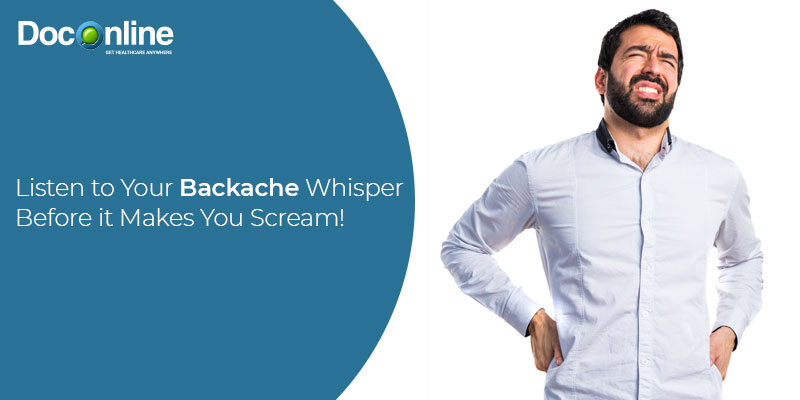It is said that back pain is like your youth leaving your body. By the way, did you know that 87% of young people have back pain, let alone the elderly? Let us look at some of the following figures:
STATISTICS
- Backache is a very common condition affecting about 80% of people at some point in their lives.
- It is the second-most common cause for missed working days. In fact, back pain is the most common reason for consultation with doctors after consultations regarding respiratory infections.
- It starts affecting mostly between ages 19-45.
- Backache is also the primary impairment experienced among occupational injuries.
- It is the third most frequent reason for surgical procedures.
The Spinal Column – How the pivot plays the pivotal role?
The human spinal column is the center of postural control. It is built to provide stability and at the same time, it allows flexibility. These two seemingly incompatible functions of support (inflexibility) and movement (flexibility) are at the opposite ends of the movement-spectrum. This is one major reason for the spine being so vulnerable to injury.
Located between the vertebrae in our backs are discs that act as shock absorbers for the spine. The discs begin losing blood supply by the age of 20. We feed our discs by moving fluids into and out of them through mechanical compression and decompression. This is one reason to move about while we are at work.
Do you suffer from any of these common causes of back pain at work?
Bad Posture is the main cause of back pain. It can stress your back muscles and spinal ligaments to an extent that causes their degeneration.
- Repetitive motions and positions can also cause back pain due to the constant strain placed upon the back and neck.
- Isolated rare accidents can take place anytime in any line of work.
- Well, if smoking is injurious to health, constantly sitting in a place is equally damaging to the back. Sitting all day is hazardous. It puts more pressure on the disks and vertebrae than the pressure experienced due to standing or walking. It is one of the leading causes of obesity and metabolic syndrome.
So, stay as active as possible and try to continue your daily activities. This is one of the most important things you can do because resting for long periods is likely to make the pain worse.
- Exercising such as walking, swimming, yoga and pilates may also be helpful.
- Taking painkillers– remember to use them with precaution. Check if the medicines are safe for you.
- Use hot or cold compression packs for short-term relief.
- Physiotherapy and back exercises help in cases of chronic pain.
How to prevent Backache?
STANDING
Standing for long periods of time can put a lot of stress on your back. If you must stand, occasionally shift your weight from one side to the other. Try propping one of your feet on a foot stool six-to-eight inched high.
Occasionally, tighten your abdominal muscles. This can enable you to keep your back straight.
Your body's immune system pays the price when you are stressed. You are more likely to get sick if your immune system is weak. Having strong emotional health is equally important. Practice breathing exercises. Take breaks, disconnect from technology such as smart phones that we tend to keep in our pockets and carry around everywhere with us.
SLEEPING
Sleep every night. Change your daily habits to get better sleep. Maybe you need to stop eating late night snacks or avoid drinking coffee 1/2 hour before bed. Learn the 4-7-8 Yoga breath that will help your body relax and enable you to go to sleep. Look for a cervical support pillow that will keep your head and neck in the neutral position. If you wake up feeling refreshed, you are going to function better at work. So a good night sleep pays off in many aspects.
EATING
Eating done right- a nutritious diet, rich in Calcium, Phosphorous and Vit-D will maintain your bone health. An online doctor consultation can easily inform you of all such benefits.
STRETCHING AND EXERCISE
Stretching and exercise are often recommended for back pain. However, some of these activities may aggravate some conditions. Some discomfort is considered acceptable during the activity. However, it should not persist when the activity is discontinued.
Speak to your physician or other health care practitioner for stretches and exercises suited to your specific condition.
Your back not only supports your body, but is also responsible for your posture. A good upright posture shapes your stance, adds grace and makes you feel good as well. So treat your back right and walk freely upright!
TREAT YOUR BACK ACHE TODAY. LEAD A HAPPY LIFE TO LOOK BACK UPON TOMORROW!













